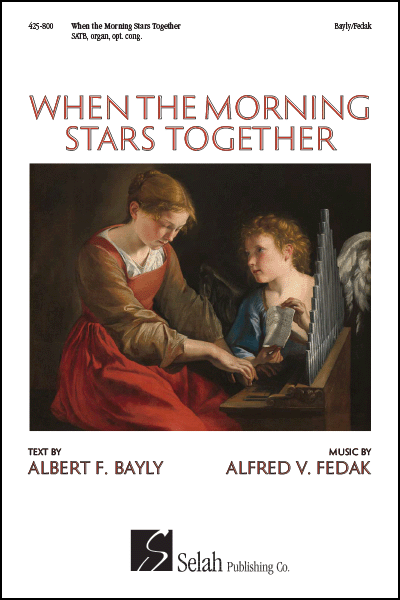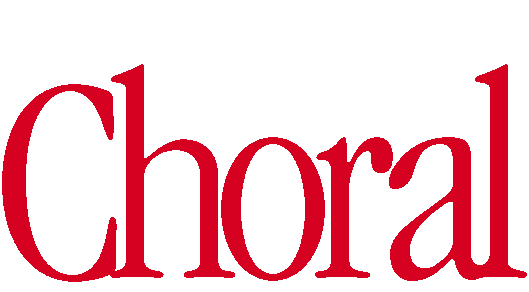|
Composer
Alfred V. Fedak
Text Albert F. Bayly, 1969
Voicing SATB, organ, opt. cong.
Topic Music, Praise and Adoration
Lectionary Usage Epiphany B, Season of Epiphany, Proper 23B, Proper 28C
Price $2.75 (U.S.)
Released 9/23
Cat. no. 425-800
Difficulty Mod. Easy
|
Order now!
Order PDF download!
Min. of 5
Description
WEISSE FLAGGEN is one of the great hymn tunes of praise, and Alfred V. Fedak's stirring anthem setting combines the choral voices with a supportive and rousing organ accompaniment. The congregation may optionally join in singing the last verse of the hymn (along with a descant). The composer also provides an optional choral SATB ending.
Anthem text
When the morning stars together
their creator's glory sang,
and the angel host all shouted
till with joy the heavens rang.
Then your wisdom and your greatness
their exultant music told
all the beauty and the splendor
which your mighty works unfold.
When in synagogue and temple
voices raised the psalmist's songs
off'ring up the adoration
which alone to you belongs;
when the singers, trumpets, cymbals,
all combined your praise to share,
awestruck people saw your glory
fill the sacred house of prayer.
Voice and instrument in union
through the ages spoke your praise.
Plainsong, tuneful hymns and anthems
told your faithful, gracious ways.
Choir and orchestra and organ
each a sacred off'ring brought,
while, inspired by your own Spirit,
poet and composer wrought.
Lord, we bring our gift of music;
touch our lips and fire our hearts.
Teach and train our senses;
Fit us for these sacred arts.
Then with skill and consecration
we would serve you, Lord, and give
all our powers to glorify you
and in serving truly live.
--Albert F. Bayly, 1966.
© Oxford University Press. Used by permission.
|
|


Review
"The popular paean to music's place in the history of faith appears in conventional hymn concertato format with the tune WEISSE FLAGGEN. The first two verses variously use voices in unison, alternation of treble and bass, and four-part harmony. The third verse departs from the tune, although Fedak cleverly builds his original melody using elements of the familiar tune. A modulatory interlude builds to a final verse (which none the less remains in the same key as the rest of the piece) for unison voices and descant. Sopranos and tenors are both indicated for the descant, and congregational participation in the melody is facilitated by a reproducible bulletin graphic on the final page.” --AAM Journal, Jan./Feb. 2024 |



